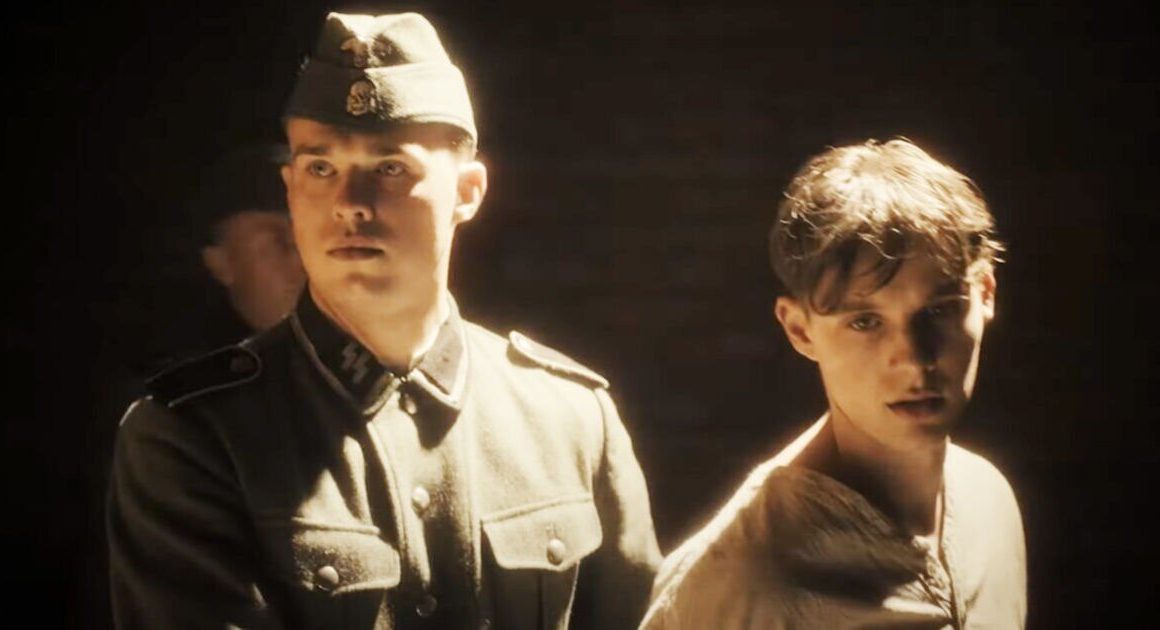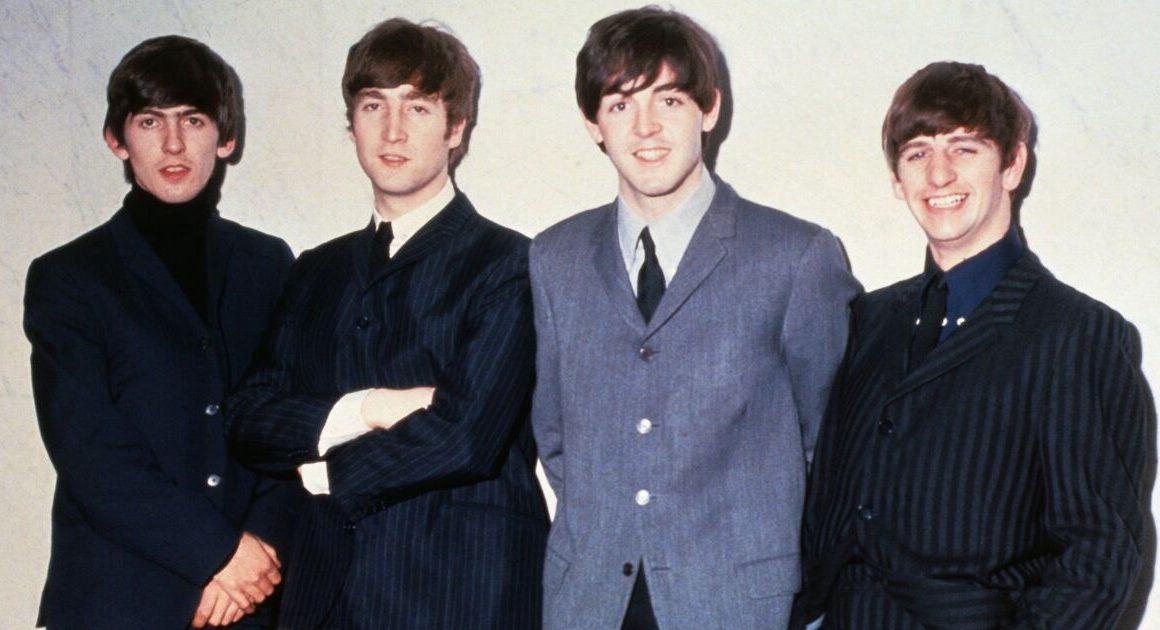
Andrew Scott played the brilliant, evil Jim Moriarty in the BBC’s 2010 series Sherlock (Image: BBC / Hartswood Films /Colin Hutton)
Was there ever a greater description of a fictional villain than the “Napoleon of crime”, as Sherlock Holmes brands his arch-rival Professor James Moriarty? “He is the organiser of half that is evil and of nearly all that is undetected in this great city,” Holmes continues.
“He is a genius, a philosopher, an abstract thinker. He has a brain of the first order. He sits motionless, like a spider in the centre of its web, but that web has a thousand radiations, and he knows well every quiver of each of them.”
While the fictional consulting detective of 221B Baker Street ranks as Sir Arthur Conan Doyle’s greatest creation, Moriarty, one of the most terrifying wicked geniuses of literature, must rank as his second. Moriarty has been depicted in books and songs, in radio drama and children’s cartoons, in paintings and engravings and on the small and big screen. All the while, audiences have been thrilled, safe in the knowledge he is but a character wholly dreamed up by Conan Doyle.
But he wasn’t. In fact, Moriarty was real – or at least his incredible character was extracted from a real-life criminal genius called Adam Worth.
Worth was born into a poor Jewish family in Germany in 1844. When he was five, the clan moved to America. At 17, he was wounded while serving in the Civil War and woke up in hospital to find he had been listed as “killed in action”. Sensing an opportunity, he promptly took the hint and went off for an open-ended holiday.
It was in New York that he took his first steps into criminality, setting up a heists gang – but one with a big difference. In 1865, the city experienced 53,000 violent crimes, but Worth was determined that he would be responsible for none of them.
Indeed, throughout his career, he had one golden rule: he never used violence, only audacity and cunning. Years later, he told his life story to one of the detectives who had trailed him for decades, explaining: “A man with brains has no right to carry firearms. There was always a way and a better way, by the quick exercise of the brain.”
For years, his crew robbed and burgled their way across America.

Sherlock Holmes creator Sir Arthur Conan Doyle based Moriarty on criminal and fraudster Adam Worth (Image: Unknown)
Things came to head when they tunnelled into the Boylston National Bank in Boston from a neighbouring shop – rather like the criminals in the Holmes short story, The Red-Headed League – which led the bank to set the famed Pinkerton Detective Agency on his trail. As a result, Worth decided it was time to head to the Old World – and moved to Paris.
He loved the city and put down roots, establishing the first American nightclub, The American Bar. Like Worth, it had a bit of a secret. Downstairs were fashionable cocktails, upstairs was the illegal casino.
When the police came calling, a buzzer would sound and the gaming tables would fold into the walls. But when the heat got too much – and after stealing $30,000 of diamonds on a whim – Worth fancied that it was time for London, and the greatest exploits of his criminal career. His change of location was noted by all the major policing agencies.
When he bought a Georgian mansion in Clapham, south London, Scotland Yard sent a message to the Pinkertons saying that Worth “occupies a commodious mansion standing well back on its own grounds out of the view of the too curious”.
For his downtime, it sported tennis courts, a shooting gallery and bowling green. If that wasn’t enough, he also rented a flat in Mayfair, at 198 Piccadilly, for £600 per year (try renting one for that price nowadays). Those two homes became the operational centres for a criminal army that undertook robberies throughout London – each one strictly avoiding violence. And those who worked for him never knew his identity, which kept them all safe.
The police knew, of course, but Worth just laughed at them, describing Inspector Shore, who became obsessed with arresting him, as “a big lunk head and laughing stock for everybody in England… he knew nobody but a lot of three-card monte men and cheap pickpockets”.
The Pinkertons, in an official history of the agency, acknowledged his influence, writing: “For years he perpetrated every form of theft – check forging, swindling, larceny, safe-cracking, diamond robbery… and bank robbery with complete immunity. His luxurious apartment at 198 Piccadilly, where he received in lavish style… became the meeting place of leading thieves of Europe and America.”

Jeremy Brett and Edward Hardwicke as Holmes and Watson in the classic Granada TV series (Image: Granada)
Worth’s inner circle was a motley international crew, with only one Englishman among them: huge former wrestler Jack “Junka” Phillips, who got his nickname because he carried an extraordinary amount of junk in his pockets. Phillips was strong enough to carry a huge safe on his back, so it could be cracked open later at Worth’s convenience.
Through these years, Worth thoroughly enjoyed his double life of criminal and society man-about-town, who hosted dukes and duchesses on his 110ft steam yacht The Shamrock.
It was a fast boat too – well, it had to be when it outran a Royal Navy gunboat after Worth liberated $10,000 from a warehouse safe in Kingston, Jamaica. “Inspector Shore agrees with me, this must be Adam Worth,” a Pinkerton report later stated.
It was then that Worth laid the plans for his most celebrated – and romantic – crime. The recently rediscovered portrait of Georgiana, Duchess of Devonshire, painted by Thomas Gainsborough a century earlier, was the talk of London. The ancestor of Diana, Princess of Wales, had been the great beauty of the age. And Worth wanted her portrait.
So he stole it. And for the next 25 years, he kept it with him as he travelled – including during his trip to South Africa to steal $500,000 in uncut diamonds. It was always there, rolled up in the false bottom of his trunk. Eventually, he sold it back to its rightful owners for $25,000 – somewhere around £700,000 today.
“The origin of Moriarty was Adam Worth, who stole the Gainsborough in 1876,” wrote the early Holmes expert Vincent Starrett, adding: “This was revealed by Sir Arthur in conversation with [his friend] Dr Gray Chandler Briggs.”’
But there are stark differences between Worth and the wicked professor.
The Pinkerton history reads: “Anybody with whom he had a speaking acquaintance could always go to him and receive assistance, when he had it in his power to give.”
The fictional Moriarty would grimace at the very thought. Scotland Yard also respected and feared Worth. Robert Anderson, head of the CID, was once asked to name the cleverest criminal he ever met.
He replied: “Adam Worth. He was the Napoleon of the criminal world. None other could hold a candle to him.”

Author Gareth Rubin’s brilliant new novel, Holmes and Moriarty, picks up where Conan Doyle left off (Image: Netflix)
But it couldn’t last. Clever as Worth was, he had to rely on his subordinates – some of whom weren’t that bright. The beginning of his downfall came when his brother was arrested in Istanbul for passing a forged cheque. Then, when Worth mounted a robbery in Belgium with incompetent associates, he was arrested.
A few years later, he was let out of prison and went back to America, where he regaled William Pinkerton, director of the famous firm, with the story of his exploits.
He eventually returned to London and continued his criminal enterprise – but the final twist in the tale was when his son became a Pinkerton detective – with his father’s blessing. If Adam Worth was ever worried that his legacy would be forgotten, he need only have opened a copy of the Strand Magazine in December 1893 – five months after the Pall Mall Gazette had detailed his real-life exploits in explosive detail – to see himself in print.
There, Moriarty stands out in the Holmes story The Final Problem as “the Napoleon of crime”.
Moriarty, of course, is a character who grabs the reader’s attention just as much as his great foe.
So much so, in fact, that when I came to write the first authorised Sherlock Holmes novel in a decade, I chose to give him his own story parallel to Holmes – and then a twist whereby the two are forced to work together as their stories entwine, or face terrible consequences both for society and for themselves. It has been a little controversial, but I’ve enjoyed fleshing out this tall, thin character with the outsized brain for mischief.
And thus, Holmes and Moriarty has been unleashed upon the world.

Benedict Cumberbatch and Andrew Scott helped the BBC brilliantly reinvent the Holmes stories (Image: BBC)
I’m not the first to be drawn to this character – the previous writer of the authorised Holmes novels, Anthony Horowitz, chose to make the criminal the eponymous focus of his second book.
On the screen, Moriarty has been an angry and malevolent presence, as played by Eric Porter in the superb ITV series starring Jeremy Brett, perhaps the closest to the scant portrayal that Conan Doyle affords us; or out-and-out psychotic like Andrew Scott in the BBC’s modernist drama Sherlock. Either way, depictions tend to veer away from the source material – Worth was as brilliant as them, but seems, in short, to have been a more romantic criminal, in it for the game as much as anything.
And it’s not only Conan Doyle who stole Worth for literature – TS Eliot nabbed him as the model for Macavity: The Mystery Cat in Old Possum’s book of Practical Cats.
“And they say that all the Cats whose wicked deeds are widely known/ (I might mention Mungojerrie, I might mention Griddlebone)/ Are nothing more than agents for the Cat who all the time/ Just controls their operations: the Napoleon of Crime!”
Worth would, no doubt, be flattered.
- Holmes and Moriarty by Gareth Rubin (Simon & Schuster, £18.99) is out now. Visit expressbookshop.com or call Express Bookshop on 020 3176 3832. Free UK P&P on orders over £25












